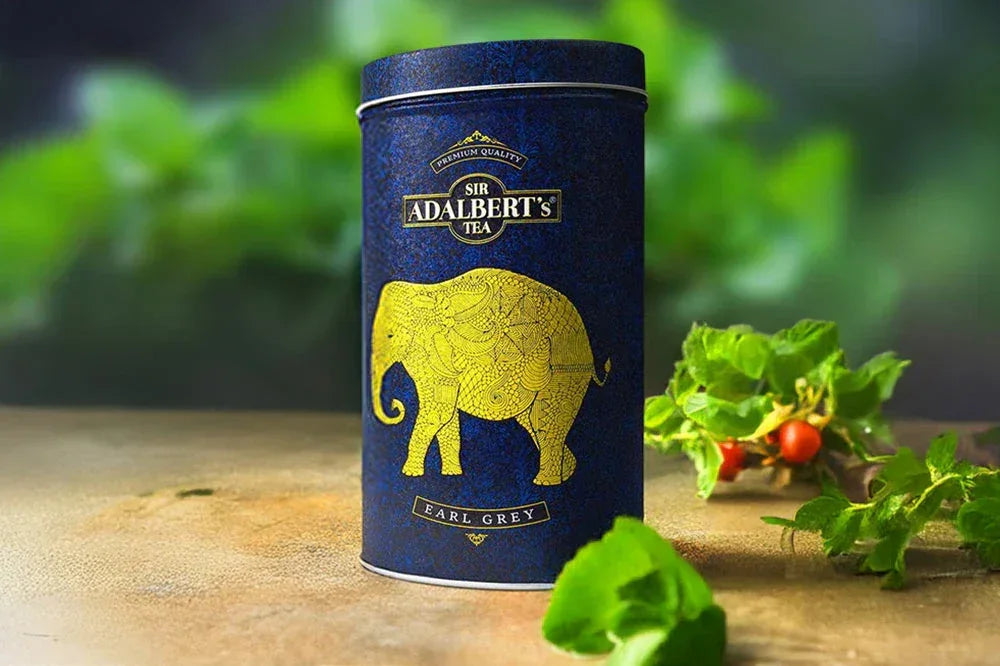
What does the tea ceremony look like?
Tea drinking can be experienced in many ways. For most of us, it's a daily, enjoyable ritual—a moment of pause with a cup of our favorite beverage. However, there's a dimension to tea drinking that goes far beyond simple consumption. tea ceremony – a deeply spiritual, artistic and social event in which every gesture has meaning and the act of brewing tea becomes a form of meditation.
While many cultures celebrate tea drinking, none have taken this custom to such perfection and philosophical depth as Japan. The Japanese tea ceremony, known as Chanoyu (茶の湯, literally "hot water for tea") or Chado/Sado (茶道, meaning "the way of tea") is much more than just preparing a beverage. It is a meeting of art, nature, and spirituality. In this article We explain step by step what this extraordinary tea ceremony looks like and how you can incorporate its elements into your own life to find peace in a cup of green tea.
What will you find in the article?
The Philosophy of the Japanese Tea Ceremony – Roots in Zen
To understand the Japanese drinking ceremony, you must first understand its philosophical foundations. This ceremony is inextricably linked to Zen philosophy., which came to Japan with Buddhist monks. It was they who, in ancient times, used matcha tea to support long hours of meditation.
Over time, and especially in the 16th century thanks to masters such as Sen no Rikyūwho studied Zen, the tea ceremony was codified and imbued with deep meaning.
4 rules of the tea ceremony
This unique tea ceremony is based on four main principles:
- Wa (和) – Harmony: Harmony between guests, host, nature and objects used.
- Kei (敬) – Respect: Respect is shown to everyone and everything, from other participants to brewing utensils.
- Sei (清) – Purity: Cleanliness, both physical (surroundings and tools) and spiritual.
- Jaku (寂) – Peace and solitude: Inner silence that allows you to achieve a meditative mood and appreciate the fleeting nature of the moment.
The whole the drinking ceremony is also steeped in aesthetics wabi-sabi, or the wabi philosophy, which teaches us to find beauty in simplicity, imperfection and the natural aging processTherefore, Japanese ceremonies often use simple, handmade vessels that bear the marks of time.
Preparing for the Tea Ceremony – Stage and Props
The tea ceremony takes place in a specially designed space, designed to create an atmosphere of peace and separation from the hustle and bustle of the outside world. Key elements for a successful ceremony include:
- tea pavilion (Chashitsu) – is a simple, modest room, often located in a garden. The entrance to it, called nijiriguchi, is very low, forcing guests to enter on their knees. This gesture symbolizes the humility and equality of all participants in the tea ceremony.
- garden (Roji) – The path leading to the pavilion through the garden is also an important element of the ceremony. Walking along it allows guests to clear their minds and prepare for the upcoming experience.
- tokonoma – a small alcove in the wall of the pavilion, constituting the aesthetic focal point of the space. It houses a simple but carefully selected arrangement of flowers (chabana) and a vertical picture or scroll with a calligraphed saying (kakemono) that refer to the season or the theme of the meeting.
-
accessories (Dogu): Every item used during a Japanese tea ceremony has its place and significance. Essential items include:
- kama: A heavy, cast iron jug used to heat water.
- chawan: A ceramic bowl from which matcha tea is drunk.
- Natsume: Lacquered container for powdered matcha green tea.
- chashaku: Bamboo tea spoon.
- chasen: Bamboo whisk for whisking matcha tea with water.
What does a Japanese tea ceremony look like?
A full, formal chanoyu ceremony can last up to four hours. The ceremony is strictly structured, and every movement of the host is precise and graceful. Here's a simplified description of what the ceremony is like.
-
Step 1: Arrival of guests and cleaning
Guests enter the garden, where they await the host's invitation. Before entering the pavilion, they wash their hands and mouths with water from a stone vessel (tsukubai), symbolizing purification from the cares of the outside world.
-
Step 2: Meal (Kaiseki)
In a formal tea ceremony, the host first serves the guests a light meal (kaiseki), consisting of several small, seasonal dishes. A small amount of sake is also served with the meal.
-
Step 3: Main Tea Ceremony – Koicha (Thick Tea)
This is the most solemn part of the Japanese drinking ceremony. After a short break, guests return to the pavilion. The host, focused, ceremoniously cleans the utensils. Then, he begins the process of brewing koicha tea—a thick, creamy drink made from the highest quality matcha tea. He prepares a single cup, from which all guests sip, passing it from hand to hand. This act of communal drinking symbolizes the unity of the ceremony.
-
Step 4: Further Tea Ceremony – Usucha (Light Tea)
The ceremony now becomes more relaxed. The host prepares usucha—a lighter, frothy version of matcha green tea—this time serving a separate cup to each guest. Traditional Japanese wagashi sweets are served alongside the tea, their sweetness perfectly balancing the slightly bitter taste of the drink. Upon receiving the cup, the guest bows, turns it over in their hands twice as a sign of respect, and then drinks the infusion.
The Role of the Host and Guests in the Tea Ceremony
The Japanese tea ceremony is a dialogue without words. Host (teishu) puts his whole heart into the preparation – from the selection of flowers to the precise movements of the brewing process. His every gesture is an expression of hospitality and respect for those who arrive.
The role of guests is equally important. They must be fully present, appreciative of the aesthetics of the surroundings and the host's efforts.Questions asked during the ceremony concern only the accessories and decorations used. Silence and focus help create a meditative atmosphere and appreciate the beauty of the moment.
Japanese tea ceremony in the comfort of your home – is it possible to recreate it?
The Japanese drinking ceremony is not just a complex ritual, but above all a philosophy and a path to self-improvement – the "way of tea." While recreating the full ceremony requires years of study, its essence can be brought to the comfort of your home.
Instead of drinking tea in a hurry, try creating your own little tea ceremony. Choose your favorite cup, focus on the brewing process, the aroma, and the taste of the beverage. Let this moment of drinking tea become your private ceremony—a moment to calm down, be "here and now," and appreciate simple pleasures. This is the true "way of tea."




Leave a comment
This site is protected by hCaptcha and the hCaptcha Privacy Policy and Terms of Service apply.